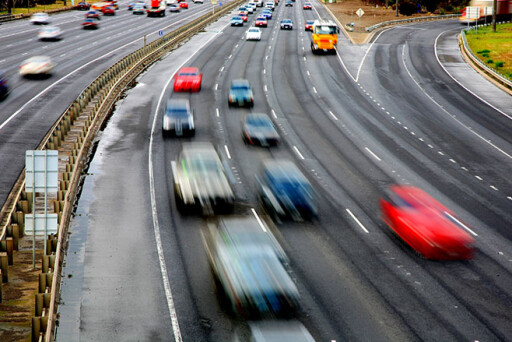
A report by the Grattan Institute is recommending Australia introduces a congestion charge within five years that would hit motorists with a hefty bill for using the busiest roads at the busiest times.
According to the public policy think tank, a system similar to existing global major capital cordon charging would slash travel times in Melbourne and Sydney’s CBD zones, while reducing the number of vehicles clogging city arteries.
Following in the footsteps of London, Stockholm, Singapore, Oslo and Milan, the new system would ping motorists entering a specific zone at certain times of the day, encouraging more commuters to leave their wheels at home and hop on public transport.
Ultimately, the one-off toll would evolve into a cost-per-kilometre charge across the restricted road network, discouraging non-essential travel into the CBD of both capitals, as well as raking in sizable revenue from those who decide to pay up.
How much? If overseas experience is anything to go by, it could be a lot. London asks for the equivalent of AU$22 for drivers to enter its congestion charge zone, while New York city will charge drivers between $15-22 to enter Manhattan south of 60th Street from 2021.
 Other cities are more moderate. Driving into central Milan will cost you €5 (A$8), while drivers wanting to access the centre of Stockholm are asked for up to SEK30 (A$4.50) and several Norwegian cities have introduced congestion tariffs of up to NOK15 (A$2.40).
Other cities are more moderate. Driving into central Milan will cost you €5 (A$8), while drivers wanting to access the centre of Stockholm are asked for up to SEK30 (A$4.50) and several Norwegian cities have introduced congestion tariffs of up to NOK15 (A$2.40).
Knock-on effects would also include air-quality improvements and funding for new traffic projects including improved road networks and public transport infrastructure.
Up to 40 percent fewer cars could be found inside the cordon after implementation, says the report, along with increased traffic speed of 16 percent inside the CBD exclusion zone and up to 20 percent on roads leading to it.
It might sound insignificant, but those localised increases could result in an overall 1.0 percent acceleration of greater Melbourne and Sydney traffic speeds at the most frustrating times. That’s about the same improvement forecast for Melbourne’s North East Link, due for completion in 2027.
The report does not propose how much motorists should be charged to cross the CBD cordon if the report is acted on, but given the above examples we would hope that the example set by European cities would be followed, rather than the more extreme pricing used by London and New York.
Grattan Institute transport and cities program director Marion Terrill said congestion charging is a more targeted revenue-raising strategy, drawing funds from commuters that actually use the busiest roads, rather than taxing the broader community to pay for projects that some might not benefit from.
“Our plan tackles congestion without asking communities to pay billions of dollars for major new roads,” she said.
“In the end, if particular roads are in high demand, it’s fairer that people who use them a lot pay more than those who rarely or never use them”.
The report also disbands ‘myths’ that claim the charge would hit lower-income drivers and that a majority of commuters heading into the CBD during the working week have no choice to climb behind the wheel.
“The charges would mainly be paid by higher-income drivers, because people who drive to the city each day for work are more than twice as likely to earn a six-figure salary as other workers,” it said.
“CBDs are well-serviced by public transport, and most people already get to the city by train, tram, or bus”.
For many, an additional charge on top of increasing fuel prices and hefty CBD parking costs might just encourage them to switch to the bus, train or tram, but would you?


COMMENTS